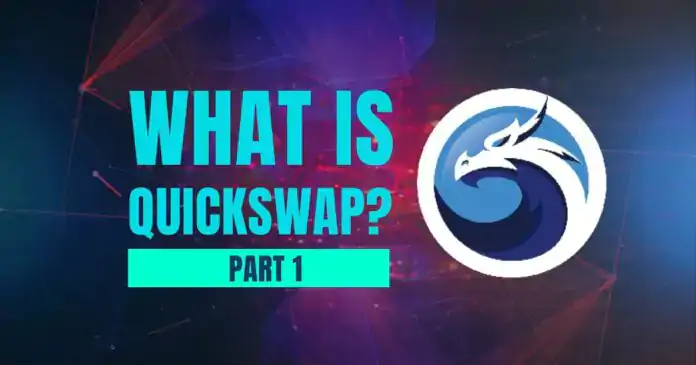Uniswap is no doubt one of the biggest DEXes. But, being built on Ethereum, reduced transaction speed and high gas fees have been a downside. However, QuickSwap aims to resolve this. Let’s find out how.
In the last 30 days#PancakeSwap#Uniswap#QuickSwap have the highest 30 days users pic.twitter.com/crnak36h9G
— Coin98 Analytics (@Coin98Analytics) December 3, 2022
What Is QuickSwap?
QuickSwap, an automated market maker (AMM) built on Polygon, is a fork of and uses the same liquidity pool model. Since it is built on Polygon, the DEX boasts a faster transaction speed and cheaper fees.
If you have used #Quickswap for one or two you would know there's no going back ??
Asides from the cheap Tx fees and super fast block time the offers, Quickswap users can't run out of passive income ideas on how to better utilize their assets to generate more returns. https://t.co/pXx4sG9OWs
— Rainbow (@Obianuju_nnaji1) December 6, 2022
QuickSwap was developed by Nick Mudge and Sameep Singhania. The platform uses an AMM model to offer a decentralized exchange experience for users to exchange tokens. Interestingly, the Polygon-based DEX has no order book. This is because users trade from liquidity pools.
Additionally, users can bridge ERC-20 tokens from Ethereum to Polygon. They can also use QuickSwap to trade any pair if there is a liquidity pool for it. Interestingly, starting a new liquidity pool is pretty simple. A user only has to provide a token pair to earn from other users’ transaction fees.
How Are Quickswap Fees Paid?
QuickSwap charges a trading fee of 0.30%. Making a swap on the platform will cost you a flat fee of 0.30%. The fee is the same regardless of the pair or the size of the trade. Being on Polygon, the fees are considerably lower than DEXes on Ethereum.
Here's the list of the Top 10 Polygon with the highest weekly Volume.#Quickswap recorded over $53k in volume just in 7 days ??
At this point, if you are not using https://t.co/lBv1IYvXRb, you are missing out on a great deal in pic.twitter.com/29EDpiwH3O
— Rainbow (@Obianuju_nnaji1) December 3, 2022
Is the Quickswap Exchange Safe?
QuickSwap poses the same risks as any other AMM platform. This includes possible smart contract bugs, impermanent losses, and rug pulls. However, the platform is also open-source. It uses audited code from Uniswap. This provides some degree of security and trust.
How Does QuickSwap Work?
As mentioned earlier, this platform uses the AMM model to offer liquidity pools where users can swap. Users interact with a smart contract instead of trading as makers or takers. Depositing a pair of coins of equal value is all it takes to provide liquidity.
Then, liquidity providers will receive liquidity pool tokens in return. This serves as a receipt, showing their share of the pool. The liquidity pool tokens are then burned when users reclaim their tokens. Additionally, users can provide them to others to use in yield farming. So, fees are reinvested for compound interest.
In conclusion, QuickSwap is pretty much like Uniswap. The only difference is that one resides on Ethereum (Uniswap), while the other (QuickSwap) is on Polygon. However, fees are cheaper on QuickSwap, and transactions are faster.
This is the first article in our QuickSwap series. Part two is coming soon.



